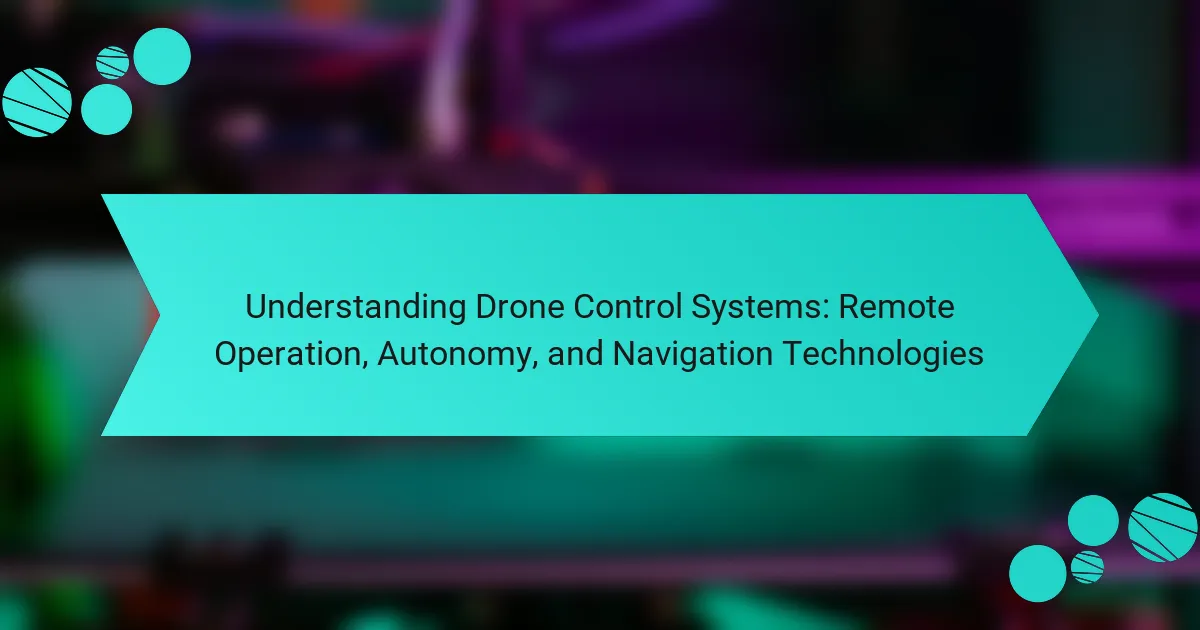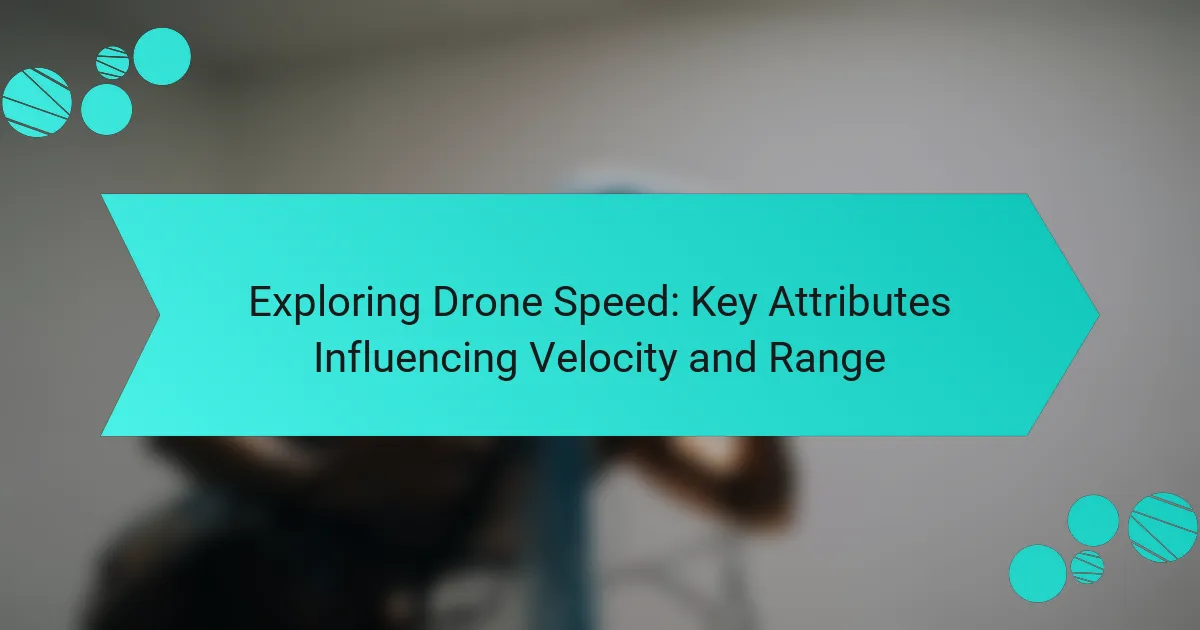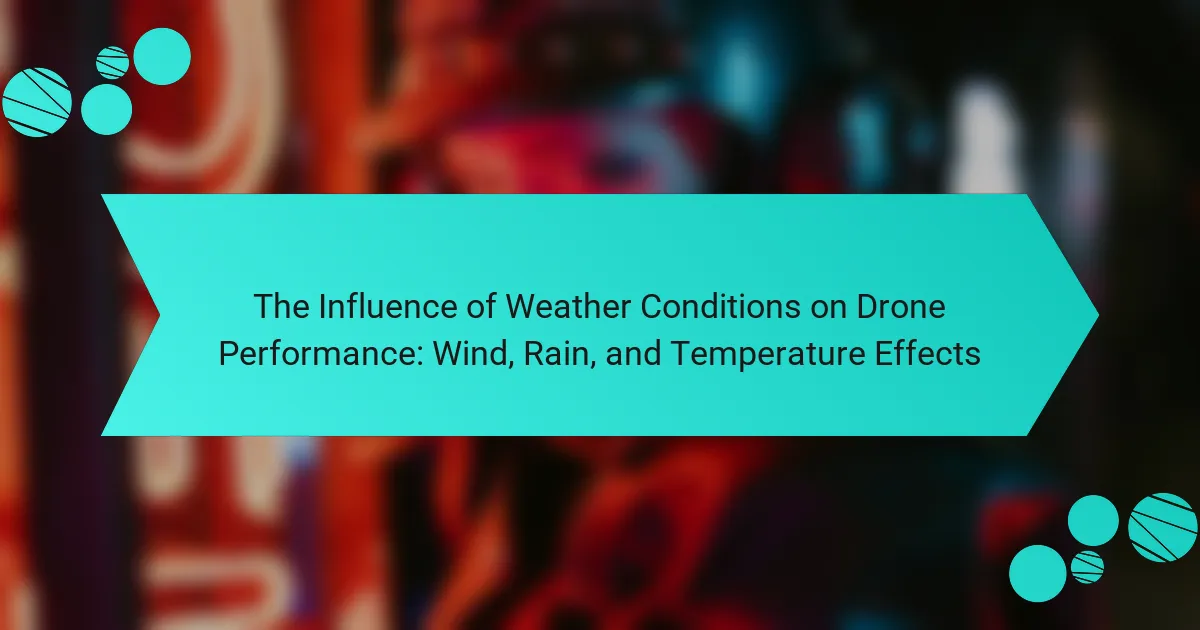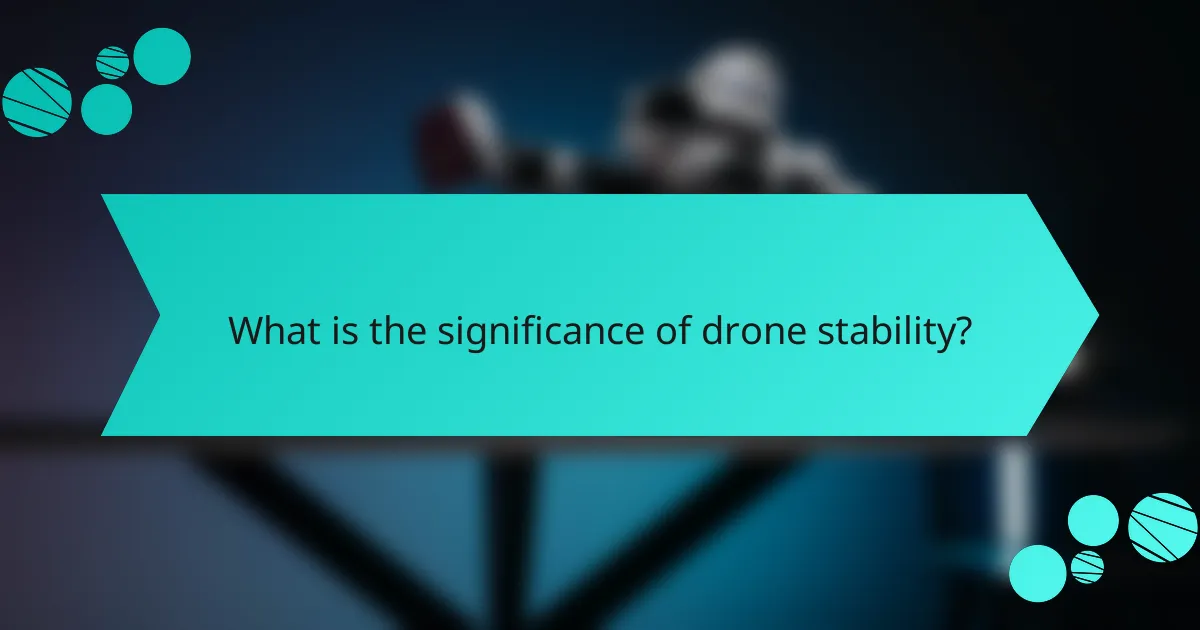
What is the significance of drone stability?
Drone stability is crucial for ensuring safe and effective flight operations. It directly influences control, maneuverability, and the quality of captured data. Stable drones can maintain their position against wind and other environmental factors. This stability reduces the risk of crashes and improves overall flight safety. Additionally, stability enhances the precision of aerial photography and surveying tasks. Research indicates that drones with advanced stabilization systems exhibit significantly improved performance metrics. For example, studies show that gyroscopic stabilization can reduce oscillations by up to 90%. Thus, drone stability is vital for operational success and user confidence.
How do gyroscopes contribute to drone stability?
Gyroscopes contribute to drone stability by measuring and maintaining orientation. They provide real-time data on the drone’s angular position. This data helps the flight controller make necessary adjustments. As a result, drones can counteract disturbances like wind. Gyroscopes enhance the accuracy of stabilization systems. They work alongside accelerometers to ensure smooth flight. The integration of gyroscopes is crucial for maintaining balance during maneuvers. Studies indicate that drones with gyroscopes exhibit improved stability and control.
What types of gyroscopes are commonly used in drones?
The types of gyroscopes commonly used in drones include MEMS gyroscopes, fiber optic gyroscopes, and ring laser gyroscopes. MEMS gyroscopes are small, lightweight, and cost-effective, making them ideal for consumer drones. Fiber optic gyroscopes offer high precision and are often used in professional and military drones. Ring laser gyroscopes provide exceptional accuracy and stability, typically found in advanced aerospace applications. These gyroscopes help maintain stability and control in various flight conditions. Their integration into drone systems enhances navigational accuracy and responsiveness.
How do gyroscopes enhance flight precision?
Gyroscopes enhance flight precision by providing stability and orientation data. They measure angular velocity and maintain a reference direction. This data allows flight control systems to adjust for disturbances. By detecting changes in orientation, gyroscopes help stabilize drones during flight. They improve responsiveness to pilot inputs and environmental factors. Research shows that drones equipped with gyroscopes have better stability in windy conditions. This leads to more accurate navigation and control. Enhanced precision is critical for tasks like aerial photography and surveying.
What design features are crucial for enhancing drone stability?
Key design features crucial for enhancing drone stability include a robust frame, advanced flight controllers, and effective propulsion systems. A robust frame minimizes vibrations and withstands external forces. Advanced flight controllers utilize algorithms to maintain balance and adjust to disturbances. Effective propulsion systems provide consistent thrust and control. Additionally, incorporating gyroscopes and accelerometers aids in real-time stability adjustments. Research shows that drones with optimized weight distribution perform better in stability tests. These features collectively contribute to a drone’s ability to maintain a steady flight path, especially in challenging conditions.
How does the drone’s frame shape affect stability?
The drone’s frame shape significantly affects its stability. A wider frame increases stability by distributing weight evenly. This design helps resist tipping during maneuvers. Conversely, a narrow frame may lead to instability in windy conditions. Aerodynamic shapes can enhance flight efficiency and stability. For instance, a quadcopter with a square frame has better balance than a long, rectangular one. Research indicates that frame rigidity also plays a role; a rigid frame reduces vibrations, enhancing stability. Therefore, the frame shape is crucial for maintaining steady flight in various conditions.
What role do propeller design and placement play in stability?
Propeller design and placement significantly influence drone stability. Properly designed propellers can optimize thrust and reduce turbulence. The angle of the propeller blades affects lift and drag, impacting overall flight stability. Placement of the propellers on the drone’s frame determines the center of gravity. A balanced center of gravity enhances stability during flight maneuvers. Additionally, the distance between propellers can affect yaw stability. Close spacing may lead to less effective control, while wider spacing can improve stability. Studies indicate that optimal propeller design and strategic placement contribute to improved flight performance and stability.
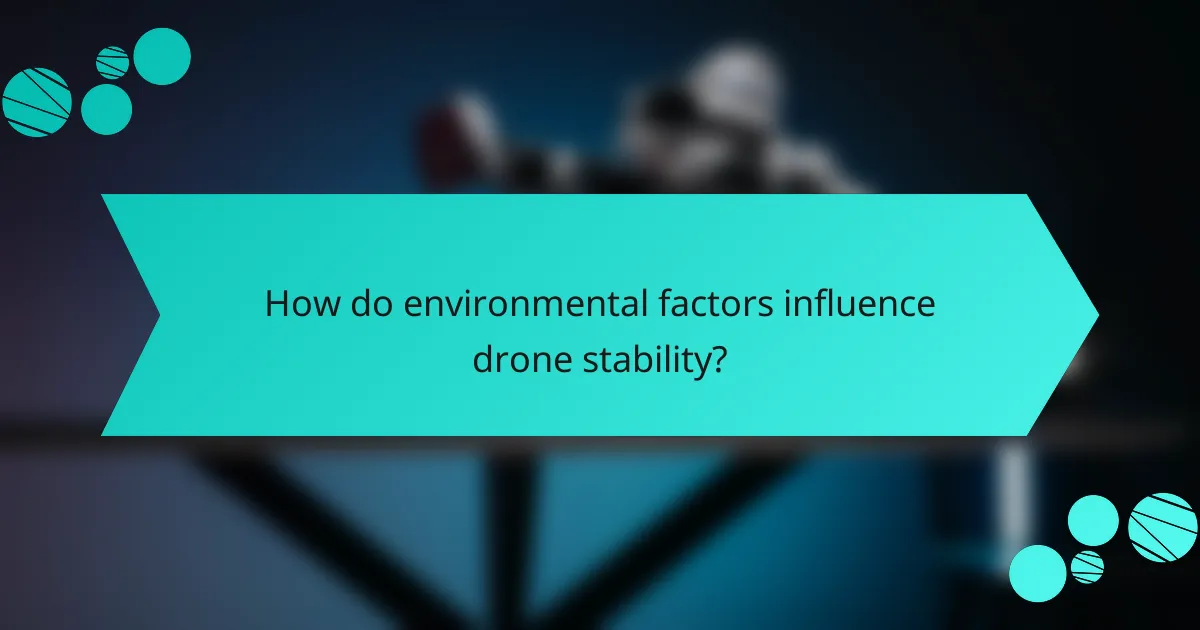
How do environmental factors influence drone stability?
Environmental factors significantly influence drone stability. Wind speed and direction can cause unpredictable movements. High winds may lead to increased turbulence, making control difficult. Temperature variations affect battery performance and component efficiency. Humidity levels can impact sensor accuracy and responsiveness. Rain or snow can add weight and reduce aerodynamic efficiency. Therefore, understanding these factors is crucial for maintaining stable flight. Studies show that drones experience reduced stability in adverse weather conditions.
What weather conditions can impact drone stability?
Wind can significantly impact drone stability. Strong winds can cause loss of control and erratic flight paths. Drones are particularly vulnerable during takeoff and landing in windy conditions. Rain can also affect drone stability by adding weight and reducing visibility. Snow and ice can lead to additional weight and impact rotor performance. Temperature fluctuations can affect battery performance, impacting flight stability. Humidity can cause electronic components to malfunction, further compromising stability. Each of these weather conditions can lead to increased risk during drone operation.
How do wind patterns affect drone flight?
Wind patterns significantly affect drone flight by influencing stability and control. Strong winds can cause drones to drift off course. This drift can lead to difficulty in maintaining a desired flight path. Additionally, gusts can create sudden changes in altitude. These fluctuations challenge a drone’s ability to stabilize itself. Drones equipped with advanced gyroscopes can compensate for some of these disturbances. However, extreme wind conditions may still overwhelm their stabilization systems. Research indicates that drones perform best in light wind conditions, typically below 10 mph. In contrast, winds exceeding this threshold can increase the risk of crashes or loss of control.
What measures can be taken to mitigate environmental impacts?
Implementing eco-friendly materials in drone manufacturing can significantly mitigate environmental impacts. Using biodegradable plastics reduces landfill waste. Incorporating lightweight materials enhances energy efficiency. Optimizing battery technology minimizes harmful emissions. Establishing recycling programs for old drones promotes sustainability. Implementing noise reduction features decreases disturbance to wildlife. Adopting regulations for responsible drone usage protects natural habitats. These measures collectively contribute to reducing the ecological footprint of drone operations.
How does technology advancement improve drone stability?
Technology advancement improves drone stability through enhanced sensors and control algorithms. Modern drones utilize advanced gyroscopes and accelerometers for precise motion detection. These sensors provide real-time data on orientation and movement. Improved algorithms process this data to adjust rotor speeds dynamically. This results in better balance and responsiveness to environmental changes. For instance, drones can now counteract wind disturbances more effectively. Additionally, advancements in materials contribute to lighter and more robust designs. These innovations collectively enhance stability during flight, ensuring smoother operation and improved safety.
What innovations in gyroscope technology are emerging?
Emerging innovations in gyroscope technology include micro-electromechanical systems (MEMS) gyroscopes. These gyroscopes are smaller, more cost-effective, and consume less power than traditional gyroscopes. MEMS gyroscopes offer increased sensitivity and precision, enhancing drone stability. Another innovation is the integration of fiber optic gyroscopes in drones. These gyroscopes provide high accuracy and are resistant to environmental factors. Advanced algorithms for sensor fusion are also being developed. They improve data processing from gyroscopes and other sensors. These innovations collectively enhance the performance and reliability of drone navigation systems.
How are AI and machine learning enhancing stability control systems?
AI and machine learning enhance stability control systems by enabling real-time data analysis and adaptive control algorithms. These technologies process large datasets from sensors to predict and mitigate instability. Machine learning algorithms can identify patterns in flight data, improving response times to disturbances. AI systems can adjust control inputs dynamically, optimizing drone performance under varying conditions. Research shows that integrating AI can reduce response times by up to 30%. This leads to smoother flight and increased safety. Overall, AI and machine learning significantly improve the reliability and effectiveness of stability control systems in drones.
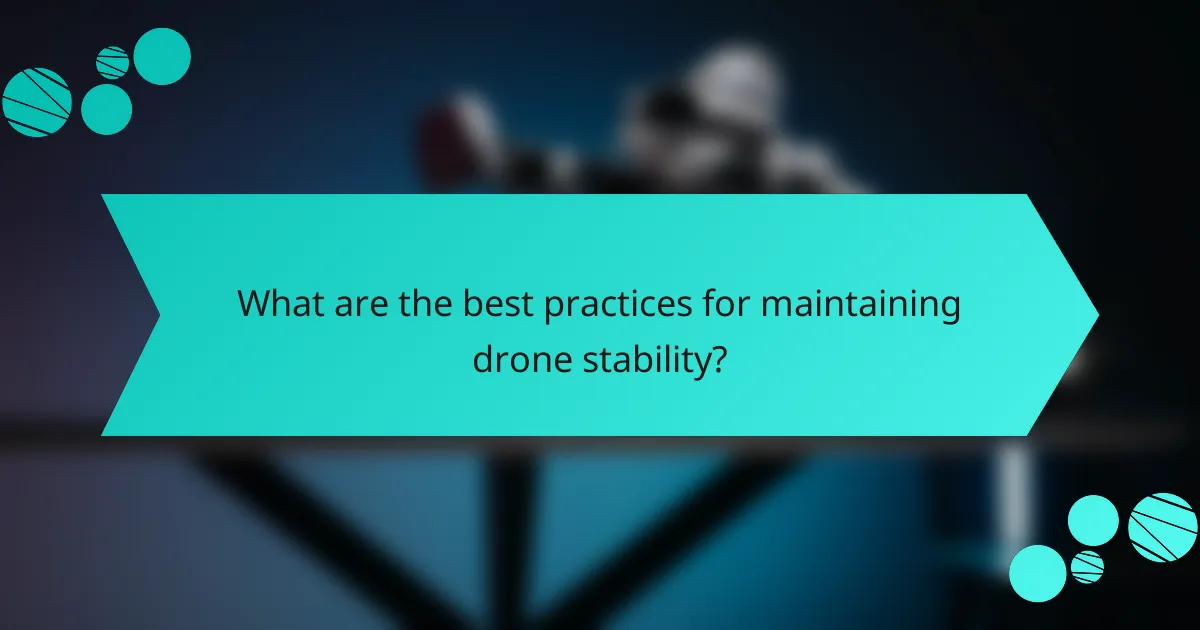
What are the best practices for maintaining drone stability?
To maintain drone stability, ensure proper calibration of sensors. Regularly check and adjust the gyroscopes and accelerometers. This calibration helps in accurately reading orientation and movement. Additionally, maintain a balanced weight distribution across the drone. Uneven weight can lead to instability during flight. Use high-quality propellers that are well-balanced. Damaged or unbalanced propellers can cause erratic movements. Regularly inspect and maintain the drone’s motors. Well-functioning motors contribute to consistent flight performance. Lastly, fly in optimal weather conditions. Wind and turbulence can significantly affect stability. Following these best practices enhances overall drone stability during operation.
How can pilots ensure optimal stability during flight?
Pilots can ensure optimal stability during flight by utilizing advanced stabilization systems. These systems often include gyroscopes that detect changes in orientation. Gyroscopes provide real-time feedback to the flight control system. This allows for immediate adjustments to maintain balance. Additionally, pilots can adjust flight parameters based on environmental conditions. For example, wind speed and direction can significantly affect stability. By monitoring these factors, pilots can make informed decisions. Regular maintenance of the aircraft also contributes to stability. Well-maintained equipment functions more reliably during flight.
What pre-flight checks should be performed for stability?
Pre-flight checks for stability include verifying the calibration of the drone’s gyroscopes. Proper calibration ensures accurate readings for stability during flight. Inspecting the propellers for damage is also essential. Damaged propellers can affect flight stability significantly. Checking battery levels is crucial, as low power can lead to unstable flight. Ensuring the drone’s frame is intact helps maintain structural integrity. Confirming that all software and firmware are updated prevents unexpected behavior. Finally, performing a test hover can help identify any stability issues before full flight. These checks collectively enhance stability and ensure safe operation.
How can regular maintenance improve stability performance?
Regular maintenance enhances stability performance by ensuring all components function correctly. Drones rely on precise calibration of gyroscopes for stability. Maintenance checks can identify misalignment or wear in these critical components. Regularly updating firmware can also improve responsiveness and accuracy. Additionally, cleaning sensors prevents interference that could affect stability. A well-maintained drone is less likely to experience unexpected behavior during flight. Studies show that drones with regular maintenance have a longer operational lifespan and improved reliability. Proper maintenance ultimately leads to safer and more stable flight experiences.
What common troubleshooting tips exist for stability issues?
Common troubleshooting tips for stability issues include checking the drone’s firmware for updates. Outdated firmware can lead to instability. Calibrating the drone’s sensors is essential for accurate readings. Improper calibration may result in erratic flight behavior. Inspecting the propellers for damage is crucial. Damaged propellers can cause imbalances during flight. Ensuring the battery is securely attached is important. A loose battery can affect the center of gravity. Verifying weight distribution across the drone is necessary. Uneven weight can lead to stability problems. Lastly, flying in calm weather conditions can enhance stability. Wind can significantly impact a drone’s flight performance.
How can pilots identify and resolve stability problems?
Pilots can identify stability problems by monitoring the aircraft’s performance and response to control inputs. They observe unusual oscillations, unexpected yaw, or roll tendencies. These behaviors indicate potential stability issues. Pilots utilize flight instruments to assess altitude, attitude, and speed. They also perform visual inspections for mechanical issues or damage.
To resolve stability problems, pilots can adjust control surfaces or trim settings. They may reduce speed or change flight configurations to enhance stability. In some cases, engaging stability augmentation systems is beneficial. Pilots should practice emergency procedures if stability issues persist. Regular training and simulation help pilots recognize and manage these problems effectively.
What adjustments can be made to improve stability during flight?
Adjustments to improve stability during flight include optimizing the drone’s center of gravity. A low center of gravity enhances balance and control. Additionally, increasing the size and quality of gyroscopes can provide better stabilization. Advanced flight control algorithms can also be implemented to adjust the drone’s response to environmental changes. Using larger propellers can enhance lift and stability during flight. Finally, ensuring proper weight distribution across the drone’s frame is crucial for maintaining equilibrium. These adjustments collectively contribute to improved stability during flight.
The main entity of this article is drone stability, which is essential for safe and effective flight operations. The article explores the significance of stability in drones, emphasizing the role of gyroscopes and various design features in enhancing performance. Key topics include how gyroscopes contribute to stability, the impact of frame shape and propeller design, and the influence of environmental factors on flight performance. Additionally, it covers best practices for maintaining stability and troubleshooting common issues, highlighting the importance of regular maintenance and technology advancements in improving drone stability.
